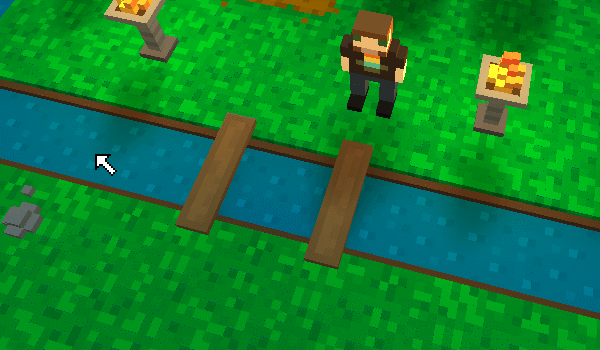Collision Override
Collision Override is a property that can be configured for tiles from the Model Properties panel. It affects two different aspects of how the player and their character behaves/interacts with a particular tile, specifically how the player character will follow the terrain as they walk across it and the boundaries for determining if the tile has been clicked on.
Terrain Following
Overriding the collision for a tile instructs the game to use the voxel coordinates of the overriding tile instead of its own when calculating the vertical position of the player as they walk across it. This is useful when a particular tile has bumps, ruts, holes, etc. that would normally result in a undesirable visual effect when the player crosses over it.
In the example below, the tile with tall grass on the left does not have a collision override assigned, so the player pops up and down when walking across it. As for the tile with tall grass on the right, a completely flat tile was assigned as its collision override, so the player walks across it smoothly. This feature can be used together with the different “terrain following” methods to achieve a variety of visual results. See Terrain Following for more information about each type that is available and examples of each.

Mouse Selection
Overriding a tile's collision also affects the boundaries of where the player is able to click in order to walk to that tile. This can be beneficial in cases where a tile's shape potentially makes it difficult to be clicked on with the cursor (for example, a narrow bridge or walkway) and you'd like to provide a larger clickable area.
As shown in the example below, the wooden board on the left has a fairly small clickable area due to its narrowness. The wooden board on the right has been assigned a collision override of a full 16×16 tile, therefore the player will not have to be as precise when attempting to click on it.
